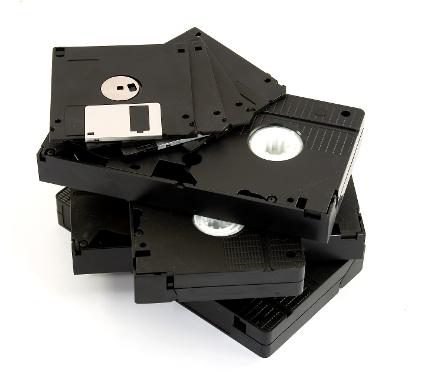Jason Blaine 2nd Annual Celebrity Charity Golf Classic: PMC Night With The Stars Fundraiser Gala
As I write this, it has only been 2 hours since the Gala was over. But it was great! Plus, I was very lucky to be able to be a videographer on the broadcast---especially doing the main camera. So if you were at the Gala and were impressed at what you saw, and you want a videographer who has taped Jason Blaine, TIm Hicks, Chad Brownlee and The Western Swing Authority, at your next event, drop me a line and let me know.
Since it sure was fun.
-Trevor Thurlow
June 16, 2015, 11:59 p.m.
Shepherds, Wise Men, You And Me: We Will See Him - Uturn Concert
While this is not a production of Trevor Thurlow Productions, I am promoting it as I am the Producer and Director of the Television Broadcast of this Concert. The concert will occur Live at Festival Hall, in Pembroke, Ontario, on November 22, 2014. The broadcast will start on November 29, and will be repeated until December 29 on TVCogeco Ottawa Valley. TVCogeco is available only on Cable in the Ottawa Valley: Channel 12 in Pembroke, Petawawa and Deep River, Channel 22 in Cobden, Renfrew and Arnprior.


3. Interlace and Progressive Video
Ever since television broadcasts began in the 1940’s video has been recorded and broadcast in a format called “interlace”, where half of the image is transmitted first and then a fraction of a second later the second part is sent. This form of analog compression has since made its way into digital video; you have most likely heard of 480i or 1080i, that draws the odd numbered lines of the frame first, followed by the even numbered lines.. Unfortunately streaming video over the internet requires that all video be in progressive format, where the whole image is sent at once. Unfortunately this requires a lot more bandwidth than interlace, especially for 1080p video, which is why you don’t see 1080p being broadcast on anything, other than pay-per-view (the ATSC standard can currently accommodate 1080p, however, even though some provider’s claim 1080p, these statement’s have been questioned by many). As a result an interlace signal sent over the internet will look like a “comb” has been placed over the image. De-interlacing can help to clear this up, however most software de-interlace programs throw-away one full field of the image, or half your resolution, and then duplicates the remaining field, giving you your progressive frame.
DVD’s and Blu-Ray’s can accept both Interlace and Progressive video, and all the DVD/Blu-Ray players currently out on the market have much higher quality de-interlace hardware built right into them that gives a better progressive picture than most professional de-interlace machines. This is why, when I create a DVD, if the video is an interlace video, I put the video on the DVD in interlace. Even when the DVD player is just converting a 480i image to a 480p picture, a DVD player will give a much better image than a software de-interlace to even an iPhone 480p.
4.
‘If It Ain’t Broke, Why Fix It?’
This next one comes from a July 2013 Forbes Magazine article. Apparently the hype about the death of DVD and Blu-ray mostly comes from New York, Los Angeles, San Francisco and a “small handful of other enclaves”. Forbes says that due to the recent recession, a lot of people still find that it is cheaper to rent a physical disc than to rent or purchase a digital copy. Not to mention, but even though Blockbuster has gone the way of Betamax and VHS, the Redbox kiosk market is really hot right now. Plus, why worry about having an internet connection or even the right software on your computer when you can just pop a disc into your DVD or Blu-Ray player!
But I have even found personally
that, especially with music, it is much cheaper to buy a music CD at my local
department store, take it home and (if I want to) copy it to my iTunes and then
load the music onto my iPhone/iPad for my enjoyment. Just recently I saw a copy of the 1973
Carpenters album The Singles 1969-1973
at Walmart (and on Walmart.ca) for $8 or $0.67 per track. With Ontario tax (HST 13%) that comes to
$9.04, or $0.75 cents per track.
Compared to iTunes, the album is being sold for $9.99 before tax or
$0.83 cents per track, although if you were to buy the tracks individually,
aside from Track 5 of Rainy Days and
Mondays, which is priced at $0.99 cents, all the other tracks are priced at
$1.29 --- and that is before tax! So
with tax you are looking at $11.29 for the whole album or a price range of
$0.94 cents (when you buy the whole album and figure out the cost for each
track), going right up to $1.46 for buying a single track! Even without the prices involved, iTunes
sells heavily compressed MP3 versions of their audio tracks, while CD’s offer uncompressed
PCM audio.
Forbes magazine article:
http://www.forbes.com/sites/dadehayes/2013/07/08/six-reasons-why-dvds-still-make-money-and-wont-die-anytime-soon/?utm_source=MESA+Email+Newsletter&utm_campaign=5fad00af4b-my_google_analytics_key&utm_medium=email&utm_term=0_f57b24d15f-5fad00af4b-87159749
Posted April 4, 2014

2. Quality Stands Out
DVD’s and Blu-Ray’s provide a higher-quality video than streaming or download video does. Before I go any further you need to realize that even when I put video onto DVD, I convert most stuff to DV and then to DVD. DV has a Constant Bit Rate (this will be explained further down) of 25Mega-bits-per-second. Most Standard-Definition TV shows come from either analog U-Matic/Betacam SP tapes or digital D2 or Digital Betacam tapes. Depending on how the tapes are digitized, the U-Matic & Betacam SP tapes could be digitized with bit rates ranging from 25Mbps (DV) up to 90Mbps (Digital Betacam); D2 has a bit rate of 143Mbps, but an even scarcer SD format (D1) has a bit rate of 270Mbps. High-Definition tapes have bit rates ranging from 25Mbps (HDV) all the way up to 880Mbps with HDCam SR (HDCAM SR uses the H.264 codec in the MP4 wrapper). So, right away, for broadcast, streaming, DVD and Blu-Ray, all four of those delivery formats give you only a portion of the original signal.
Constant-Bit-Rate allows video to be played with every single frame of video receiving the same amount of compression as the preceding frame. Variable-Bit-Rate adds more compression to frames that do not have a lot of changes: when you think of older movies, such Miracle On 34th Street (1947), a lot of times the camera would get a shot of a note that someone had written and hold it for a few seconds. When a DVD is being compressed, a scene like that with just a note would receive a lot more compression than a scene that contained someone running, since there is very little changing in the scene with the note, however a running scene would have a lot of changes.
I have downloaded quite a few TV shows from iTunes, and on average for a Standard-Definition half-hour show (approximately 22 minutes without commercials) the H.264 file is only 250 MB’s in size with a bit rate below 2.5Mbps. For High-Definition you are looking around 1GB (for 1080p from iTunes) and a bit rate below 6Mbps (for 720p content) and 8Mbps (for 1080p content). For comparison most cable and satellite companies provide you with bitrates around 1.5 to 3.0 Mbps for Standard-Definition channels and anywhere from 8.5 to 11.5 Mbps for 1080i HD channels (that’s for your average CTV or NBC channel, sports channels, such as TSN and ESPN are usually around the 9.5 to 14.0 range). Even though the ATSC and other Digital Broadcasting standards call for bitrates around the 38.5 Mbps range, you have to remember that a broadcast signal needs to carry its own error correction, plus those extra Mbps also carry program guide information and closed-captioning information. Also local affiliates (for network shows) and cable/satellite companies can add even more compression to the signal. Another thing you should remember is that, even if you are receiving a 1080i signal, it may not be “True” 1080i. For the 2014 Super Bowl, Fox was using six 4k camera’s and over 100 1080pHD camera’s for their broadcast, but they were down-converting the 4k and 1080p to 720p resolution for broadcast; so in Canada, where all HD stations broadcast in 1080i, the Fox signal was being upconverted from 720p to 1080i. While they are not the same, in a way a broadcast signal is very similar to how video is sent over the internet. When there is a scene with very little motion, the bit rate will be low, while scenes with high action require more bit rates. Although, with OTA, cable and satellite, if another channel requires more bitrates before the current channel requires the bit rates, then the high action scene will look very blocky from the low bit rate. As George Ou for “Real World IT” said in January 2008 for his “Here’s What Fake HD Video Looks Like” article at ZDNet:
‘Granted the usage of higher-end codecs like H.264/MPEG4-AVC or VC-1 can lessen the losses in quality, but no compression technology in the world can handle fast changing video with low bit-rates without severe degradation.’
(http://www.zdnet.com/blog/ou/heres-what-fake-hd-video-looks-like/962 Accessed April 1, 2014)
While DVD’s MPEG-2 codec is old
and “bulky” by today’s H.264, AVC, VC-1 and MP4 compressions, it does offer a
higher quality, since for the same half-hour TV show you are looking at a file
size that is about 1GB per half-hour, with a bitrate ranging between 4.5 and
8.5 Mbps. Of course, if the program is
burnt to DVD at a 1.5 – 3.5 Mbps, such as with the Echo Bridge Home
Entertainment release of the 1989-1991 Bordertown,
degradation is a major issue. For a half-hour show I can also burn it to a
DVD at a constant –bitrate where the bitrate is set at, for example, 8.0, and
then only moves between 7.5 and 8.5 Mbps.
This allows for the playback of a rather smooth and “unblocky” image
without picture degradation. Also, if
you have a family video that was recorded on VHS in the LP or SLP modes, the
picture has already been degraded, thus when the video goes to DVD, you do not
want to degrade the image any further than necessary. So having a high bit rate for your family
video is important in achieving the quality that you are looking for.
Posted April 2, 2014

Every time that we turn on the TV and watch the news or a certain program, we are bombarded by ads telling us to go to the station’s website, or to download an app for our tablets and cell phones so that we can stream video to watch where ever and whenever we want to. So that begs the question: is physical media dead?
What exactly do I mean by physical media? Physical media could be anything from VHS and audio tapes to CD’s and DVD’s. While VHS and audio tapes are physical media, for this article we will not be focusing on them. That leaves CD’s, DVD’s and Blu-ray’s, which are Optical Media Discs, descendants of the late CED (Capacitance Electronic Disc, this was basically a vinyl record that was modified to playback video; it was played back with a diamond needle, just as a regular audio record used) and Laserdisc formats that stored analog video. However, unlike Laserdisc, DVD and Blu-Ray store and playback digital video. And unlike streaming video, DVD and Blu-Ray are actually more portable. And this portable is a major reason that DVD and Blu-ray will be around for some time.
1. Portability and Simplicity
You may be asking yourself how DVD’s and Blu-Ray’s are more portable than getting video over the internet! Getting video over the internet is as easy as pulling out your phone, tablet or laptop and logging onto a website or open up an app and selecting the video that you want to see. Not quite.
First off there are many different formats of web video out there from Adobe Flash to H.264 and HTML5. For example, while Apple desktop and laptop computers allow you to watch Flash video, Flash is an old codec and Apple’s iPad, iPhone and iPod lines do not support Flash. Even though you may think that you will not run into Flash video, I have encountered Flash video on websites that contain video that was uploaded in the early 2000’s, such as HGTV Canada. Why do they not upload newer versions? It is a matter of cost: if it’s an old program that has not been aired in 10 years, even if it is still popular, it would cost money to have someone fetch the tape and re-digitize the footage and upload it; the websites just keep using the old Flash videos. With DVD’s and Blu-ray’s you only need a DVD or Blu-Ray player (Blu-Ray players also play DVD’s), a TV that is hooked up to that DVD/Blu-ray player and the disc: you load the disc, hit play and that’s it.
Second, download speed. If you are in a big city then you most likely have download speeds right around the 10 MB/second, but some smaller cities and even rural areas will have reduced bandwidth capacity, sometimes as low as dial-up.
Also, and this may sound like a really, simple idea, but most people forget, but in order to access the internet, you need to be in an area that offers internet access. If you are on a camping trip in some remote area, and it is rainy day, and all that you can do is stay in the camper and watch videos, it is very unlikely that you are going to have access to a cable or phone line or even be able to receive a cell signal.
Another thing is that you are able
to hand DVD’s and Blu-Ray’s to people.
This is very handy for situations where there is going to be a small
number of people watching the program. Examples
of this could be wedding videos or even a video promoting your business at a
trade show that you can hand out to potential clients. For web video you could put the address of
the video on your business card, but most people only look at business cards
for your phone number and find it to time consuming to type in the address. With
a physical disc potential clients are more likely to watch it since it is
physical, so when they go through their show bag or briefcase, they’ll see it
and all they have to do is put the disc in a player and hit play.
Posted April 1, 2014.